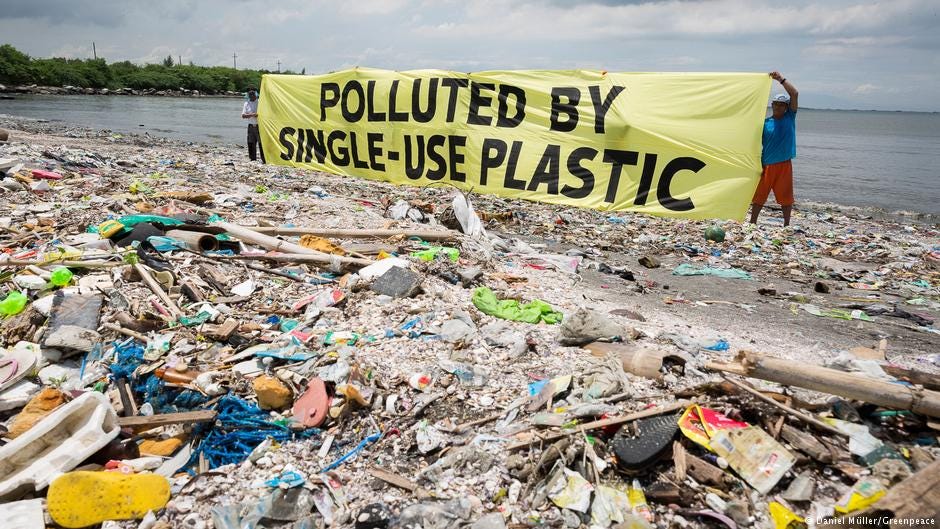
Ibrahim Ismail Elnafat
The Global Menace of Plastic Pollution
Most Read Stories Today
-
Water Scarcity and Artificial Rainfall: The Positive and The Negative Effects of Cloud Seeding, including Health Hazards and Climate Implications.
-
Renewable Energy in Rural Areas: Challenges, Opportunities, and Successful Rural Projects
-
Pakistan's Agriculture at Risk Due to Climate Variability
-
South Korea's floods: root causes and prevention strategies.
-
South Africa's Recent Floods: Is Climate Change to Blame?
-
South Africa: Cape Town, A City Under Fire
-
The Human Cost of Climate Disasters
-
Our Oceans, Our Future: The South African Dilemma of Overfishing
-
Degenerative Impact of Hydrocarbons On The Environment.
-
Successes and Failures of Paris Agreement
The problem of plastic pollution is a global phenomenon. It doesn’t exist in a vacuum. This marine litter and plastic pollution endangers aquatic life, threatens human health and weakens our ecosystem to adapt to Climate Crisis.
It can also alter the habitats and natural processes, disrupts our food production, economically affecting millions of people. Such a global threat requires a global response. What matters in Europe matters in Africa or other parts of the world.
The health risk of plastic pollution need to be emphasized both economically and socially alongside other stressors such as Climate Change and environmental degradation.
- As of 2022, there are approximately 9.5 billion tons of plastic produced from 1950 to date and 77% or 7.3 billion tons of them became a waste, ending up being dumped in landfills.
- Plastic production has risen exponentially in the last decades and now amounts to some 400 million tons per year– a figure set to double by 2040.
- The production of plastic from fossil fuels is contributing to the climate crisis. Plastic impacts human health, causes environmental imbalance and harms our precious air, water, land, and wildlife.
- The plastics and petrochemical industries plan to quadruple plastic production by 2050, jeopardizing the chances of keeping global temperature rise below the critical 1.5 °C threshold.
- Bottled water industry doesn't produce water, they only produce plastic bottles.
- 40 per cent of plastic produced is used only once, and because it's not biodegradable, it will never disappear completely. We need to change the system and end our dependence on fossil fuels and plastics.
- The United States is one of the world's largest producers of plastic waste, and less than 10% of the plastic produced is recycled.
- It's not a great idea to just recycle our way out of the plastic pollution crisis. We need to successfully transform it systemically into a circular economy.
- Plastic makes up 80% of the debris found in the ocean and is ingested or engulfed by marine life, causing serious injury and death.
- Every minute, the equivalent of one garbage truck of plastic is dumped into our ocean.
- It's estimated that 11 million tons of plastic pollution enters into the ocean every year.
- About 3 million tons of plastic pollution are getting into the sea from the rivers.
- One billion smokers smoke about 6 trillion cigarettes each year, and these fibres reach almost every corner of the world. Cigarette butts are the most common plastic litter on beaches, making marine ecosystems highly susceptible to microplastics leakages.
Therefore, Multilateral action is urgently needed to identify where and how plastic pollution makes its way into the sea and how to optimize policy changes on plastic production and use.
At the resumed fifth session of United Nations Environment Assembly (UNEA-5.2), held in Nairobi between 28 February and 2 March 2022 by the world leaders on ending plastic pollution, deliberated on proposals on such multilateral actions, with the aim of establishing an Intergovernmental Negotiating Committee (INC) to work towards a legally binding global agreement by 2024, to govern plastic pollution by addressing the entire life cycle of plastics, i.e. their production, use, and disposal.
The Committee members’ commitment to the process and to the eventual treaty to end plastic pollution, although it was characterized by procedural scuffles, long delays, and late nights, the INC-2 concluded by setting out a path for the intersessional period leading to INC-3. This synthesized report of elements that were not considered during INC-2, and preparing of a “zero draft” of the new treaty for consideration at INC-3.
With over 300 observer organizations, they were able to come to an understanding on the provisional application of the draft rules of procedure.
The INC-2 was held in Paris, France, from 29 May – 2 June 2023, at UNESCO's headquarters, attracting over 1,656 participants from 169 countries and the EU.
This landmark agreement, that addresses the full lifecycle of plastics from source to the ocean, is set to be the most important international multilateral environmental deal since the Paris climate accord.
References:
- https://www.unep.org/plastic-pollution
- https://www.unep.org/news-and-stories/story/what-you-need-know-about-plastic-pollution-resolution
- https://www.unep.org/news-and-stories/story/why-we-need-fix-plastic-pollution-problem
- https://www.unep.org/news-and-stories/story/inside-clean-seas-campaign-against-microplastics
- https://enb.iisd.org/plastic-pollution-marine-environment-negotiating-committee-inc2-summary
- https://cidce.org/en/conclusions-of-the-fifth-session-of-the-united-nations-environment-assembly-nairobi-2022/

Terms & Conditions
Subscribe
Report
My comments